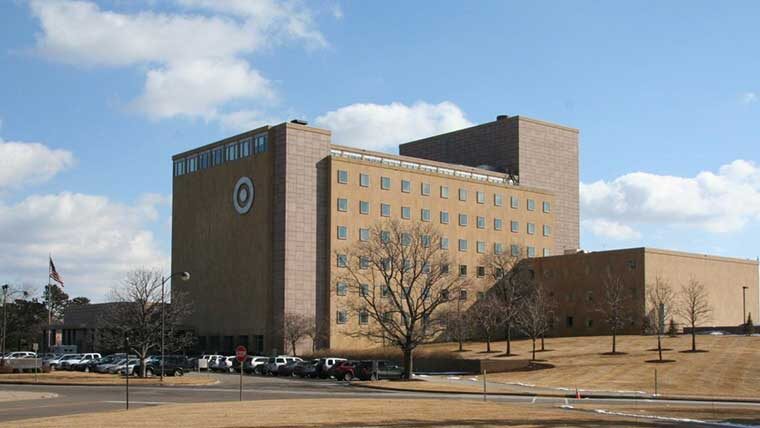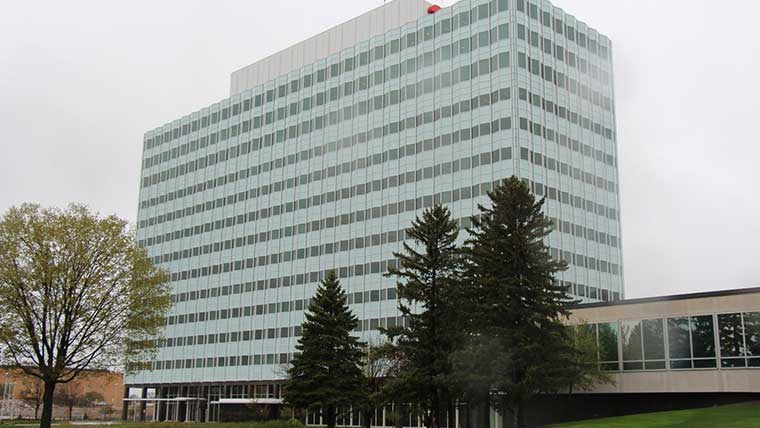What makes a corporate office building from the 1950s or 60s eligible for listing in the National Register of Historic Places? Given the staggering number of buildings constructed during this time period, this is a challenging question.
The fields of history and architectural history have only recently begun to examine Post World War II (postwar) commercial trends and distinctive architecture. While some contextual analysis is available at regional or local levels, very little guidance exists on a national level to evaluate the historic and architectural significance of postwar commercial buildings. This results in inconsistencies of evaluations across the country.
Mead & Hunt recently worked on two corporate office buildings for the Minnesota Department of Transportation that reflect national postwar trends: 3M Corporate Headquarters, and Prudential Insurance Company of America. To successfully evaluate these buildings for historic significance under Section 106 of the National Historic Preservation Act, a careful consideration of the historic context that shaped these properties was required.
The National Context
Local research focusing on the Twin Cities placed these properties within larger national trends of the postwar period. Both corporate campuses illustrate widespread suburbanization as the United States entered the postwar era. Economic optimism was running high, especially in the minds of corporate leaders. Businesses entered a period of extraordinary growth, and many large companies decentralized and diversified to improve their services and extend their reach. These national trends drove the postwar workplace away from timeworn office towers in crowded, noisy downtowns and into new facilities on landscaped campuses located on the fringe of metro areas, or in newly-established suburbs.
Postwar suburban corporate complexes typically displayed common design features: large tracts of land with buildings spread out on a landscaped campus with plenty of room to expand; enhanced visibility on major highway corridors; and often, the buildings themselves acted as prominent advertisements for the firms they housed. Many also featured structures designed specifically to attract attention and foster a reputation as forward-thinking and modern. Both the 3M and Prudential campuses reflect these trends.
3M Corporate Headquarters
3M began the move from its headquarters in central St. Paul to the suburb of Maplewood in 1952. In 1959, the company announced plans for an unprecedented expansion to accommodate research and administrative facilities through the early 1970s. The research labs were joined by a 14-story administration building, cafeteria, an underground parking ramp with a plaza above and numerous other buildings that followed as the campus continued to expand. Referred to as 3M Center, the complex was a deliberate attempt to project a corporate identity that placed research and innovation at the forefront. The striking administration building, located off Interstate-94, is a highly-visible advertisement for the company and continues to represent its prominence in the field of research and innovation.
Prudential Insurance Company of America
Prudential Insurance Company of America’s North Central Home Office was constructed in 1954-1955 on a 30-acre park-like setting along Interstate-394. It was Prudential’s first home office in Minneapolis, constructed as the company was establishing suburban regional home offices across the country. Prudential’s mid-century corporate campus features a prominent building that projected a new, forward-thinking corporate philosophy in a rapidly-evolving postwar economy. The complex included large, landscaped grounds and large parking areas. The Prudential logo was removed after the company vacated the building in the 1990s but is now occupied by the Target Corporation and features their logo.

Take-aways
Mead & Hunt evaluated these two postwar corporate office buildings to provide timely project review for Section 106 of the National Historic Preservation Act, along with other federal and state historic preservation regulations. A firm understanding of both the local history and the larger national and regional trends of the era was crucial to this success.



